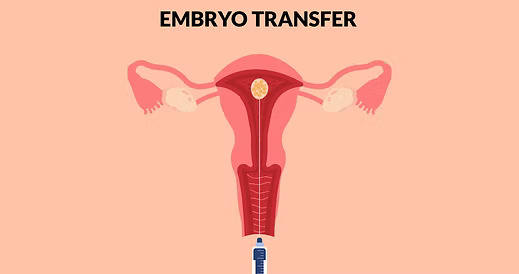
Embryo Freezing
Frozen Embryo Transfer (FET): A Personalized Path to
Pregnancy
A Frozen Embryo Transfer (FET) is a key step in the IVF
journey where a previously frozen embryo is thawed and transferred into your
uterus. This advanced technique has become a standard of care in fertility
treatment, offering high success rates and significant flexibility for your
family-building plan. An FET cycle allows your body and our medical team to
work together to create the optimal environment for implantation and pregnancy.
The FET Advantage: Why Choose a Frozen Cycle?
While fresh embryo transfers are still effective, FET cycles
offer several distinct benefits that can increase your chance of a successful
pregnancy:
- A More Receptive Uterus: After an egg retrieval cycle, your hormone
levels can be elevated, which might make the uterine lining less ideal for
implantation. An FET allows your body time to return to its natural
hormonal balance. We can then prepare your uterus with precision-timed
estrogen and progesterone, creating a perfectly synchronized and receptive
environment for the embryo or prepare the uterus in a natural cycle
mimicking what happens in a natural pregnancy. - Higher Success Rates: For many patients, especially those with a strong
response to ovarian stimulation, studies show that FET cycles can result
in higher pregnancy and live birth rates compared to fresh transfers. - Safer Outcomes: FET cycles significantly reduce the risk of Ovarian
Hyperstimulation Syndrome (OHSS) because the embryo transfer is completely
separated from the stimulation phase. - Time for Genetic Testing: If you choose Preimplantation Genetic
Testing (PGT), freezing embryos is essential. It gives the lab time to
analyze the embryos’ genetics so that only a chromosomally normal embryo
is selected for transfer. - Maximizes One IVF Cycle: If you have multiple healthy embryos from one IVF
cycle, freezing allows you to use them for future sibling attempts without
needing another egg retrieval.
The Frozen Embryo Transfer Process: A Step-by-Step Guide
An FET cycle is typically simpler and less invasive than the
initial IVF stimulation and retrieval phase. Here’s what you can expect:
1. Cycle Preparation
We will create a personalized protocol for you. The two most common approaches
are:
- Medicated
FET: This is the most common method. You will take estrogen (via
pills, patches, or injections) to build a thick, healthy uterine lining.
Once the lining is optimal, you will begin progesterone (often via
injections or suppositories) to make the uterus receptive, mimicking the
natural cycle. - Natural
or Modified Natural FET: This approach uses your body’s natural
ovulation cycle. We monitor you closely and time the transfer based on
your own hormonal surge. Minimal medication may be used to optimize
timing.
2. Monitoring
Throughout the preparation phase, you will have regular monitoring
appointments, including blood tests to check hormone levels and ultrasounds to
measure the thickness and pattern of your uterine lining.
3. Embryo Thaw
On the morning of your transfer, our expert embryologists will thaw the chosen
embryo using a careful and controlled process. Thanks to modern vitrification
(flash-freezing) techniques, embryo survival rates are exceptionally high.
4. The Transfer Procedure
The embryo transfer itself is a simple, pain-free procedure that requires no
anesthesia. Similar to a pap smear, your doctor will use a soft catheter to
gently place the embryo into the ideal spot within your uterus. The process is
guided by ultrasound for precision and takes only a few minutes.
5. The Two-Week Wait
After the transfer, you will continue progesterone and estrogen support (in a medicated
cycle) or just progesterone oral support in a natural cycle. Approximately 9-12
days later, you will return for a blood pregnancy test.
Is an FET Cycle Right for You?
FET is an excellent option for many patients, including
those who:
- Have frozen embryos from a previous IVF cycle.
- Are planning to use donor eggs.
- Are undergoing PGT.
- Had a fresh transfer that was not successful.
- Are at risk for OHSS.
- Wish to pursue embryo banking or fertility preservation.
Your physician will discuss whether a fresh or frozen transfer is the best strategy for your specific situation.
Our Commitment to Excellence
The success of an FET cycle relies heavily on the skill of the embryology lab and the precision of the clinical team. Our clinic is proud
to have:
- Expert
Embryologists: Skilled in the latest vitrification and thawing
techniques to ensure the highest embryo survival rates. - Individualized
Protocols: We don’t believe in a one-size-fits-all approach. Your
medication plan is tailored to your body’s unique needs. - Compassionate
Support: We understand the emotional weight of this process. Our
team is here to support you every step of the way.
Ready for the Next Step?
If you have frozen embryos or are considering IVF, a Frozen
Embryo Transfer could be your path to pregnancy.
Contact us today to schedule a consultation and learn how
our FET program can help you build your family.
